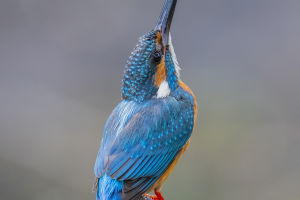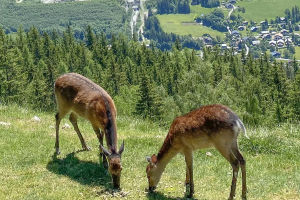Giraffes, the tallest land animals on Earth, captivate our imaginations with their distinctive features and fascinating behaviors.
These herbivorous mammals inhabit the grasslands, bushlands, and open expanses of the African continent, contributing to the rich tapestry of its wildlife.
1. Physical Appearance:
The giraffe's most remarkable trait is its towering presence. These graceful giants can reach heights of 5.5 to 6 meters, with males typically being slightly larger than females. Here are some key physical characteristics of giraffes:
Elongated Neck Necklace: The giraffe's most iconic feature is its exceptionally long neck, which can extend up to 2.5 meters and consists of seven cervical vertebrae. This impressive adaptation enables them to effortlessly browse leaves and tender shoots high in the treetops.
Imposing Size: Beyond their elongated necks, giraffes boast robust bodies, with weights ranging from 680 to 1,360 kg, supported by sturdy limbs.
Spotted Patterns: Adorning their bodies are irregular brown spots, each unique to the individual giraffe. This spotted coat serves as an effective camouflage in their natural grassland habitats.
Leggy Grace: Giraffes possess long, graceful front and hind legs that facilitate swift movement across the savannas, allowing them to elude potential predators.
2. Lifestyle and Habitat:
Giraffes inhabit expansive regions across Africa, including Kenya, Tanzania, and South Africa, favoring open grasslands, bushlands, and thickets. Here are some insights into their lifestyle:
Dietary Preferences: Giraffes primarily graze on leaves, shoots, and twigs. Their long, dexterous tongues and powerful mouths are instrumental in reaching nourishment within the towering trees. Giraffes exhibit dietary versatility, consuming various plant species, and ensuring sustenance even during arid spells.
Water Sources: While giraffes do not frequently require external sources of water due to their ability to extract moisture from their food, they do visit waterholes periodically, particularly during dry seasons, to hydrate themselves.
Social Behavior: Giraffes tend to be social animals, often forming small groups composed of females and their offspring. Males, on the other hand, typically display more solitary tendencies but may join groups during the mating season.
The establishment of territories and mating rights among males involves "neck-neck" battles, characterized by the mutual jostling of their elongated necks.
Reproductive Cycle: Giraffes lack a distinct breeding season, allowing them to reproduce year-round. The gestation period lasts approximately 15 months, typically yielding a single cub, although instances of twins have been recorded.
Cubs are born with the ability to stand and walk, but they depend on maternal care until they gain independence.
3. Distinctive Behaviors:
Giraffes exhibit unique behaviors that make them stand out in the animal kingdom:
Graceful Neck Movements: Giraffes move gracefully, taking slow, deliberate steps as their long necks allow them to reach high-hanging foliage with ease. When feeding, they often bend their front legs and extend their heads toward the treetops.
"Necking" Battles: Male giraffes engage in "necking" contests to establish territory and assert mating rights. These battles involve bumping each other with their long necks, occasionally accompanied by swift kicks.
Vocalizations: Giraffes are generally silent animals, but they communicate through low-pitched growls, hisses, and occasional barks.
Giraffes are truly remarkable and captivating creatures on the African continent, celebrated for their distinct appearance and behaviors.
However, they confront a range of challenges, demanding international collaboration to protect and preserve this invaluable species. This article aims to provide you with a deeper understanding of the lives and ecological significance of giraffes.


